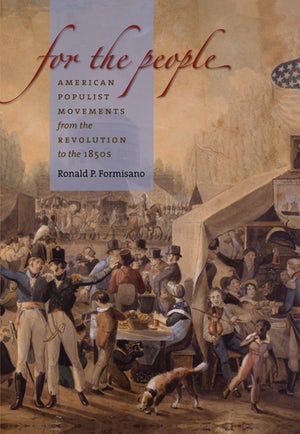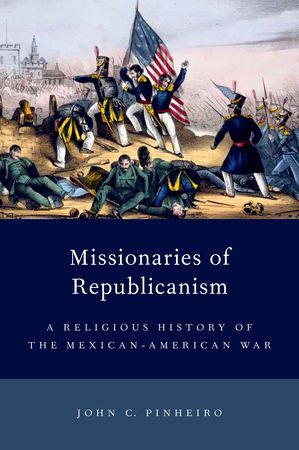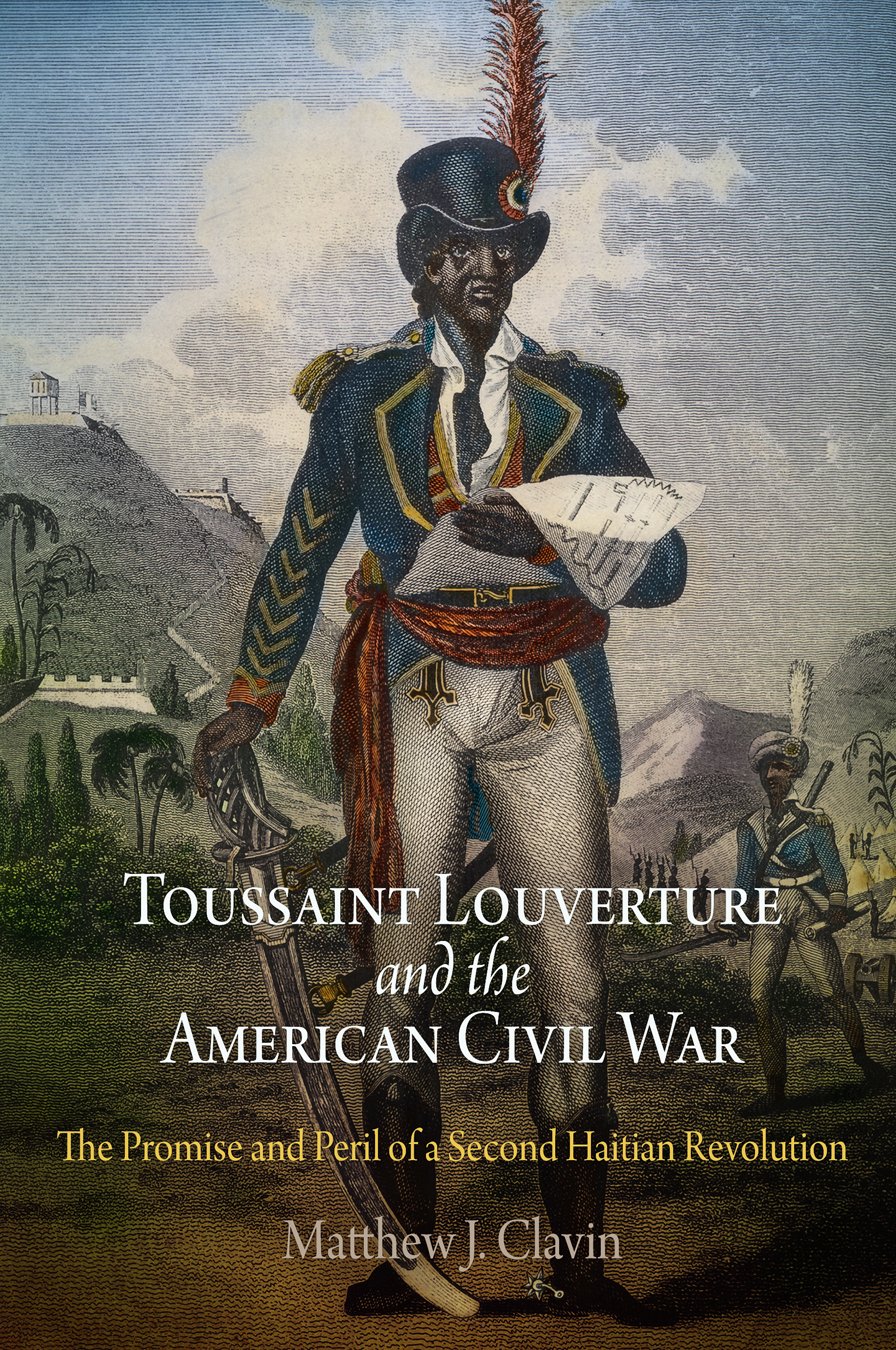Whereas many scholars have grappled with the apparent paradox of Thomas Jefferson’s writings on liberty and his involvement in slavery, Padraig Riley tackles the larger question of why so many northerners “who believed the United States should be a beacon of democracy for a world enslaved by aristocratic power became the political allies of men who believed the United States was obliged to protect a master’s right to enslave” (1-2). In hindsight, the rise of Jefferson’s Republican Party can appear to be the beginning of “Slave Power,” slaveholders’ dominance of the federal government, which matured during the Jacksonian era and oversaw the expansion of slavery, the suppression of abolitionism, the dispossession of Native land, and the political denigration of free people of color. Eschewing a simplistic focus on racism, Riley provides a compelling and nuanced interpretation of northern Republicans centered on their egalitarian ideals and unintended consequences. His study effectively integrates state and national developments while drawing on obscure as well as prominent characters and events.
Jeffersonians were committed to social mobility and a political culture that expanded suffrage and political participation beyond the tradition elite. Those in New England were often religious dissenters who perceived themselves as oppressed by wealthier Federalists and looked to southern Republicans to aid them in expanding the boundaries of democratic self-government and promoting religious freedom. The Mid-Atlantic states, meanwhile, included large numbers of immigrants who celebrated the United States as a haven of liberty and embraced the Republican Party for its support of self-government and easy naturalization. Although Riley gives less attention to political economy, northern Republicans also often shared their southern comrades’ preference for small government and laissez-faire economics, believing such policies facilitated personal liberty and economic opportunity.
Northern Republicans’ egalitarianism was often cosmopolitan, leading them to support freedom across racial as well as national boundaries. For example, in the 1780s, Levi Lincoln (a future Jeffersonian) helped argue the court cases that ended slavery in Massachusetts, and in the 1790s, Abraham Bishop of Connecticut called on Americans to support the rebel slaves of Saint-Domingue (Haiti). James Sloan of New Jersey was a vocal congressional critic of slavery during Jefferson’s presidency, seeking to tax the Atlantic slave trade (before it could be abolished in 1808) and end slavery in Louisiana and Washington, D.C. Moreover, northern Republicans led the effort to restrict slavery in Missouri in 1819. Like some other recent scholars, Riley convincingly challenges the common notion that antislavery in Congress was confined largely to northern Federalists.
However, at times northern Republicans’ alliance with a southern-based political party led them to downgrade emancipation as a priority, and even suppress antislavery sentiment. For instance, they dismissed New England Federalists’ criticism of the Constitution’s three-fifths clause (by which slaves were counted when enumerating political representation) as a cynical ploy rather than a humanitarian issue. Abraham Bishop mocked the Federalists for complaining about the three-fifths clause while they claimed full representation for “their white slaves,” who were disenfranchised by property restrictions (46). Bishop and other northern Republicans did not abandon antislavery, but “in substituting northern political inequality for southern slavery, they helped create a complex political alliance that in turn made it difficult to achieve antislavery objectives in national politics” (48).
Another factor limiting northern Republicans’ attacks on slaveholders, Riley shows, was their tendency to exaggerate the extent of antislavery sentiment among their southern allies. Focusing on Jefferson’s antislavery expressions, rather than his actual practices, northern Republicans constructed “an antislavery Jefferson” in order to “incorporate slaveholders as legitimate partners in a project of democratization” (80-81). In Notes on the State of Virginia, Jefferson had expressed his hope that population changes wrought by European immigration would facilitate the gradual abolition of southern slavery. Some northern Republicans, especially immigrants, echoed such rhetoric for it allowed them “to fantasize about the emancipatory promise of the United States” (85). The fact that “southern Federalists were the most voluble defenders of slavery” also helped northern Republicans avoid recognizing their southern comrades’ commitment to protecting slavery (58). They could similarly dismiss Virginia’s John Randolph as an eccentric outlier while imagining that most southern Republicans truly desired the end of slavery.
Sectional divisions within the Republican Party increased over time, especially after Jefferson’s trade embargo and during Madison’s early presidency. Some dissident northern Republicans allied with the reviving Federalist Party while others, such as James Sloan, supported New Yorker George Clinton as an alternative to another Virginia president. However, the War of 1812 “helped contain internal Republican dissidents, while projecting the United States as the last best hope of democratic emancipation from imperial power” (168). High-minded ideals again downgraded the importance of antislavery, and Republicans portrayed Britain’s practice of impressing sailors into naval service as worse than racial slavery and “attacked Federalist antislavery criticism as borderline treason” (163).
Riley’s final chapter and conclusion examine the two Missouri Compromises of 1819-1821, which he frames as the “culmination of sectional conflict over slavery during the Jeffersonian era,” rather than a sharp break marking the beginning of the antebellum era (203). James Tallmadge Jr., a New York Republican, initiated the “restriction” movement against admitting new slaveholding states into the Union, but eventually a small though sufficient minority of northern “doughfaces” (both Republicans and Federalists) voted with the South to allow Missouri to enter the union as a slave state. (Separate laws restricted slavery in the remaining federal territories north of 36°30′ latitude and admitted Maine as a free state). During the second Missouri Crisis, in 1821, Congress permitted the new state to forbid free African Americans from entering the state, essentially indicating that the federal Constitution’s privileges and immunities clause was limited by race.
But Riley cautions against interpreting this moment as “the emergence of a self-consciously white republic” (251). He notes that most congressmen who opposed the provision were northern Republicans, and that northerners who supported the compromise framed it in terms of preserving the Union rather than racial supremacy. Threats of secession and warnings of disunion had reached a peak during the first Missouri Crisis and many northern Republicans were reluctant to bring the nation back to the precipice. Accommodating slavery and sacrificing the rights of African Americans was “the necessary price of union” (252). Northern Republicans who voted with the South focused on what they perceived was the greater good. Although tainted by slavery, the Union and the Jeffersonian political alliance helped liberate middling northerners from elite control and served as a democratic beacon in a world dominated by authoritarian governments. In taking seriously northern Republicans’ egalitarian ideals and the world-historical significance they attributed to the Union, Riley offers an important corrective to scholarship that exaggerates the political influence of racism.
Yet he gives surprisingly little attention to northern Republicans’ ideas about federalism and their commitment to states’ rights, local power, and strict construction. Riley quickly dismisses southern arguments about federalism as a “secondary argument” during debates over slavery without considering that many northerners may have found them compelling (111; see also 226, 231). The one instance where he engages with conceptions of states’ rights suggests that additional analysis would have been fruitful. When discussing a fugitive slave bill that northern Republicans helped block in 1818, Riley highlights fundamental differences it revealed between the sections: “Slaveholders wanted greater federal power to protect their property rights, while northerners sought to protect state prerogatives and the liberty of free African Americans.” He further suggests that southerners’ subsequent arguments about states’ rights would “have seemed hypocritical” during the Missouri Crisis (211). This is an important observation and one that could have been further developed throughout the book.
Before 1819, Republicans typically only attacked slavery when doing so was consistent with their commitment to strict construction (such as taxing the Atlantic slave trade and abolishing it as soon as the Constitution permitted, in 1808). In 1819, southerners could make compelling arguments that it was too late to constitutionally prohibit slavery in Missouri. Congress should have imposed restrictions early in Missouri’s territorial stage in order to follow the precedent of the 1787 Northwest Ordinance’s ban on slavery; imposing restriction in 1819, when Missouri was ready for statehood, would rely on Federalist-style broad construction. Given Republicans’ tradition of strict construction, the fact that the overwhelming majority of northern Jeffersonians broke with their southern brethren to support restriction in 1819 suggests both the extent of their egalitarian hatred of slavery and that they had indeed become skeptical of southerners’ alleged concern about states’ rights. Only the greater good of preserving the Union could justify the continued compromises and concessions to slaveholders. Had Riley treated conceptions of federalism as seriously throughout as he treats egalitarianism, it would only have reinforced his many important contributions.
This article originally appeared in issue 16.4 (September, 2016).
Nicholas P. Wood is the Cassius M. Clay Postdoctoral Associate in Early American History at Yale University. His publications include “John Randolph of Roanoke and the Politics of Slavery in the Early Republic,” Virginia Magazine of History and Biography (Summer 2012) and “Jefferson’s Legacy, Race Science, and Righteous Violence in Jabez Hammond’s Abolitionist Fiction,” Early American Studies (Summer 2016).



















